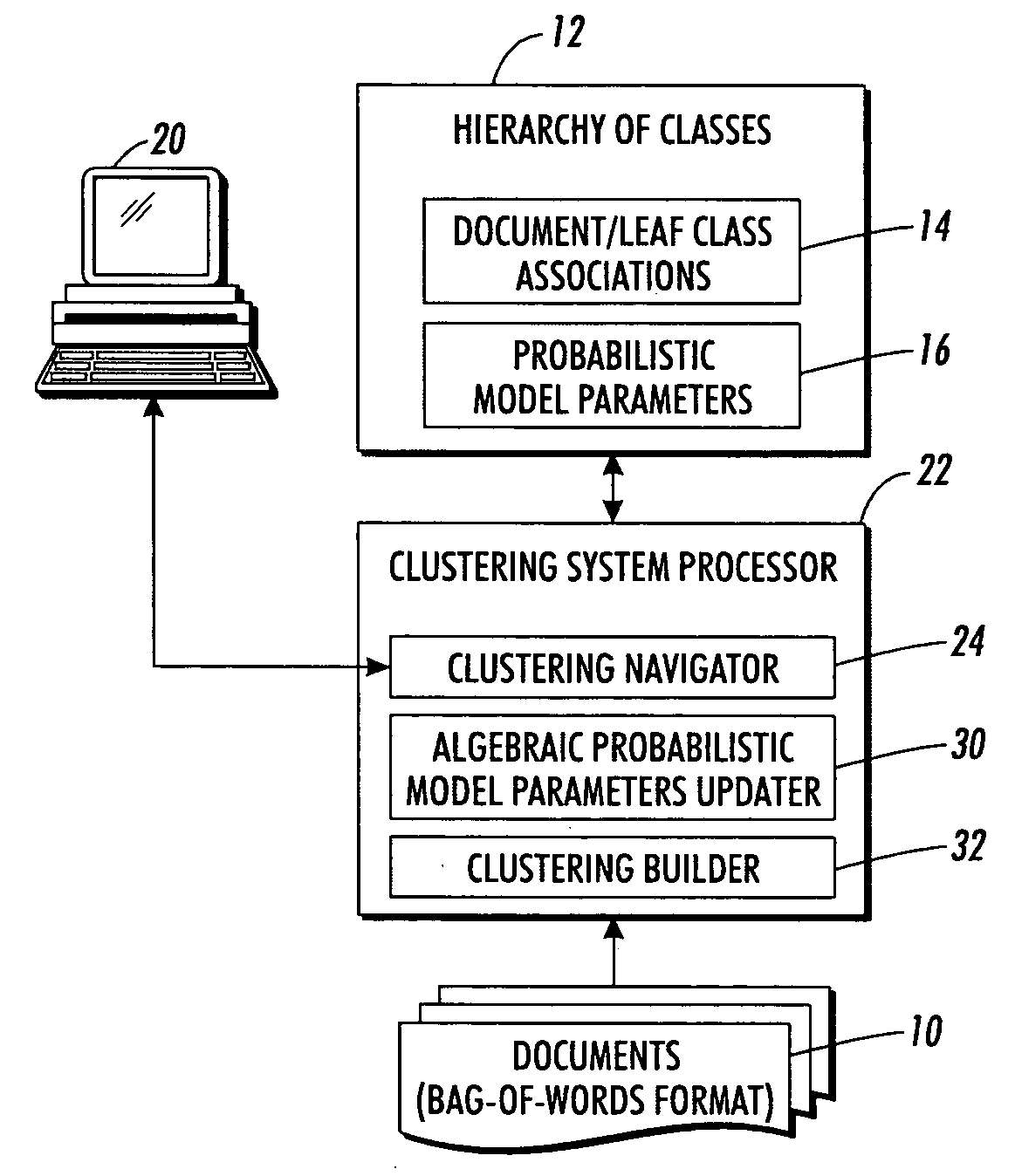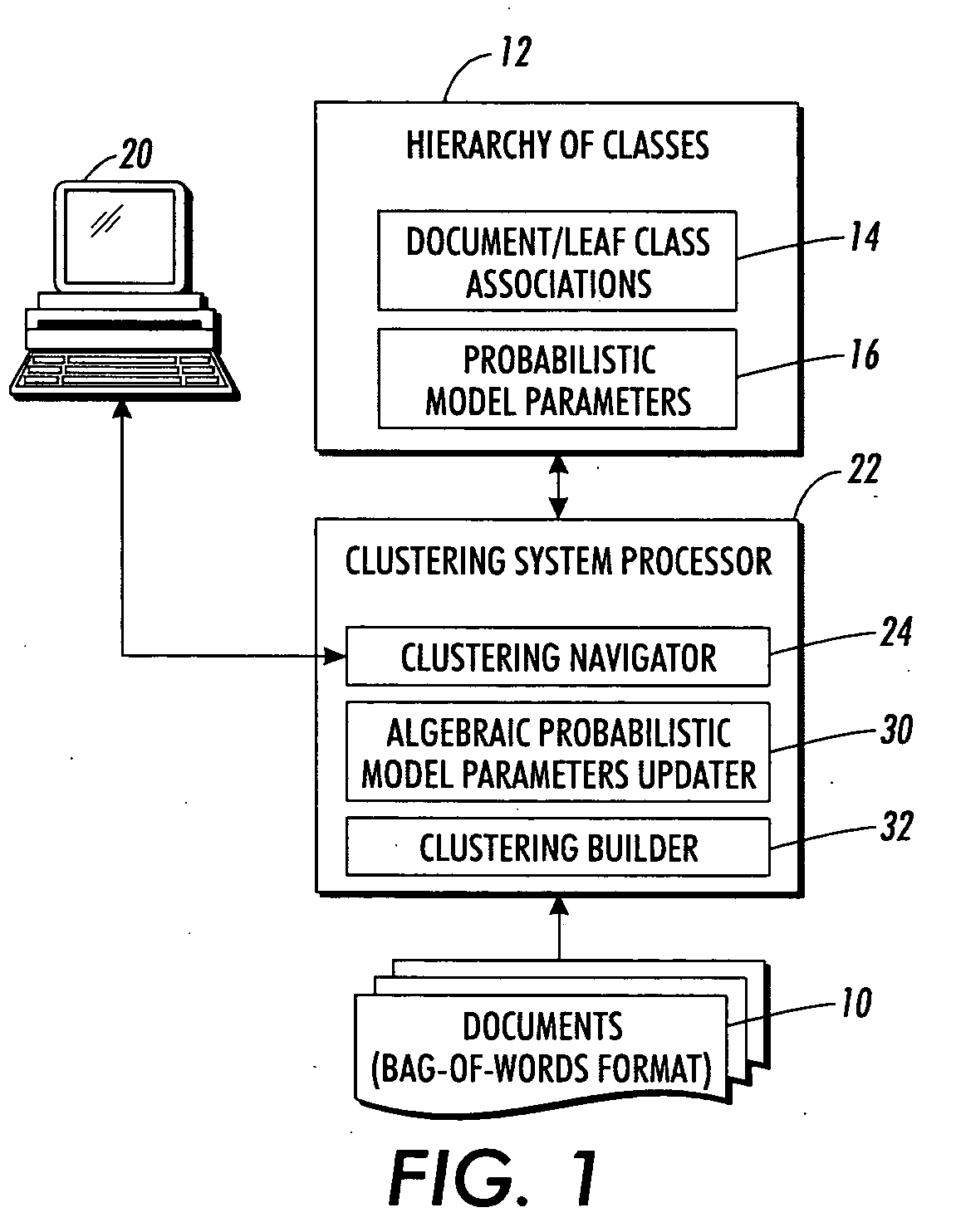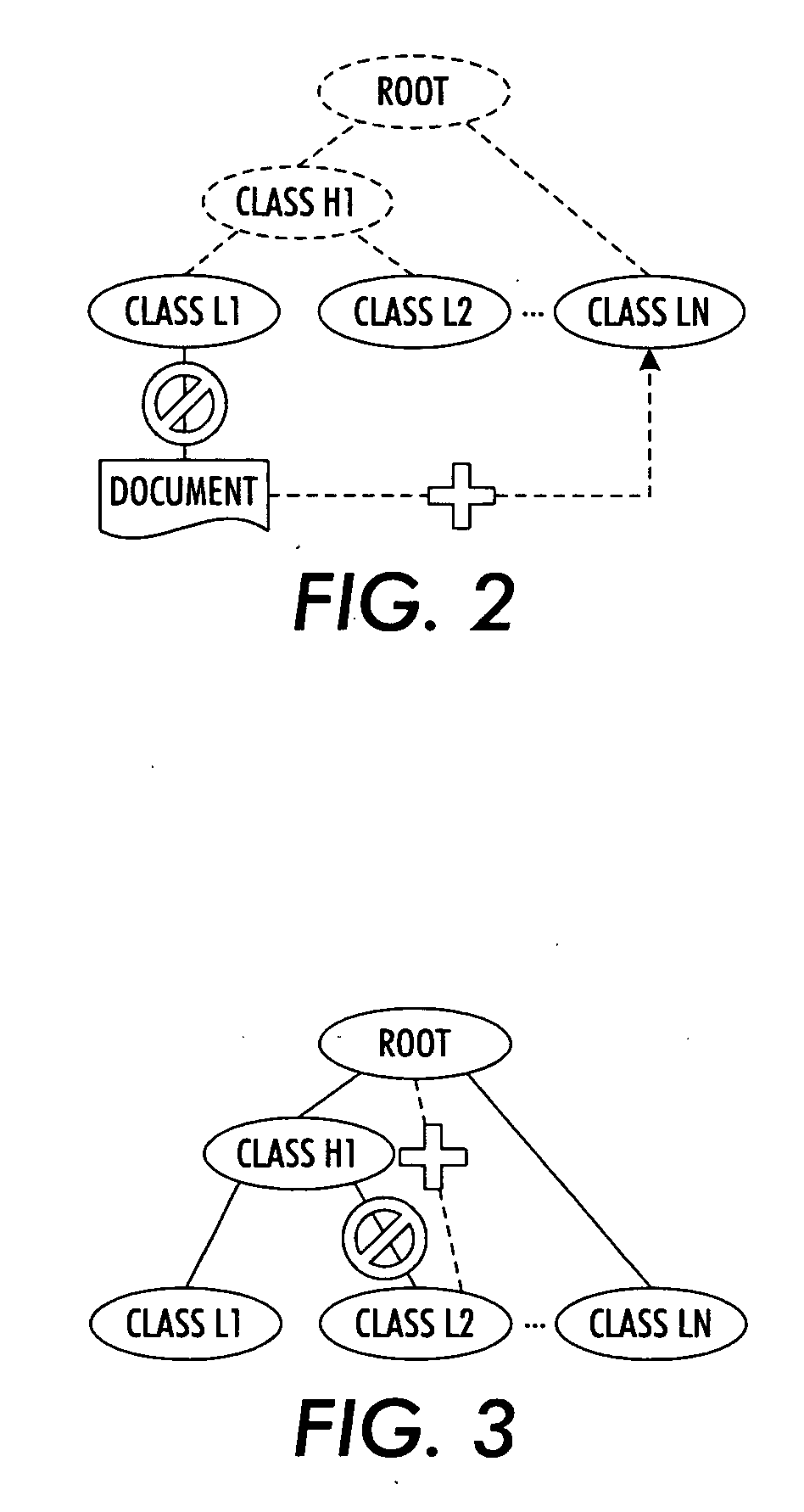Hierarchical clustering with real-time updating
a clustering and real-time updating technology, applied in the field ofdocument processing arts, can solve the problems of retraining the clustering system typically a relatively slow proposition, the classification system generated by the initial cluster training is generally static, and the probabilistic modeling parameters computed during the training are no longer accura
- Summary
- Abstract
- Description
- Claims
- Application Information
AI Technical Summary
Benefits of technology
Problems solved by technology
Method used
Image
Examples
Embodiment Construction
[0023] With reference to FIG. 1, a clustering system is described. The clustering system is a probabilistic clustering system that organizes set of documents 10 to generate a hierarchy of classes 12. Alternatively, in some embodiments a flat set of classes is generated. The hierarchy of classes 12 include document / leaf class associations 14 indicating which of the documents 10 is associated with which leaf classes of the hierarchy of classes 12. (In the art the term “class” is used, or an alternative but substantive equivalent term such as “cluster” or “category” is used. The term “class” as used herein is intended to be broadly construed to encompass the terms “cluster” or “category” as well). In some embodiments, the document / leaf class associations 14 are annotated to the documents. Each document of the set of documents 10 is suitably represented in a bag-of-words format. In the bag-of-words format, the position of words in the document is not utilized. Rather, a word-frequency v...
PUM
 Login to View More
Login to View More Abstract
Description
Claims
Application Information
 Login to View More
Login to View More - R&D
- Intellectual Property
- Life Sciences
- Materials
- Tech Scout
- Unparalleled Data Quality
- Higher Quality Content
- 60% Fewer Hallucinations
Browse by: Latest US Patents, China's latest patents, Technical Efficacy Thesaurus, Application Domain, Technology Topic, Popular Technical Reports.
© 2025 PatSnap. All rights reserved.Legal|Privacy policy|Modern Slavery Act Transparency Statement|Sitemap|About US| Contact US: help@patsnap.com



